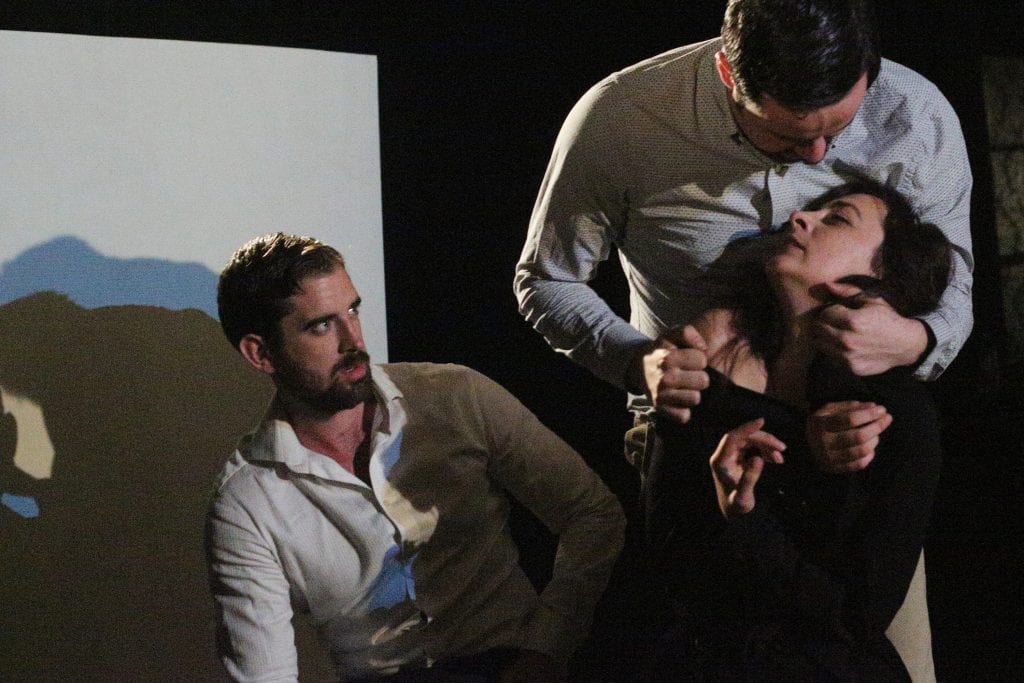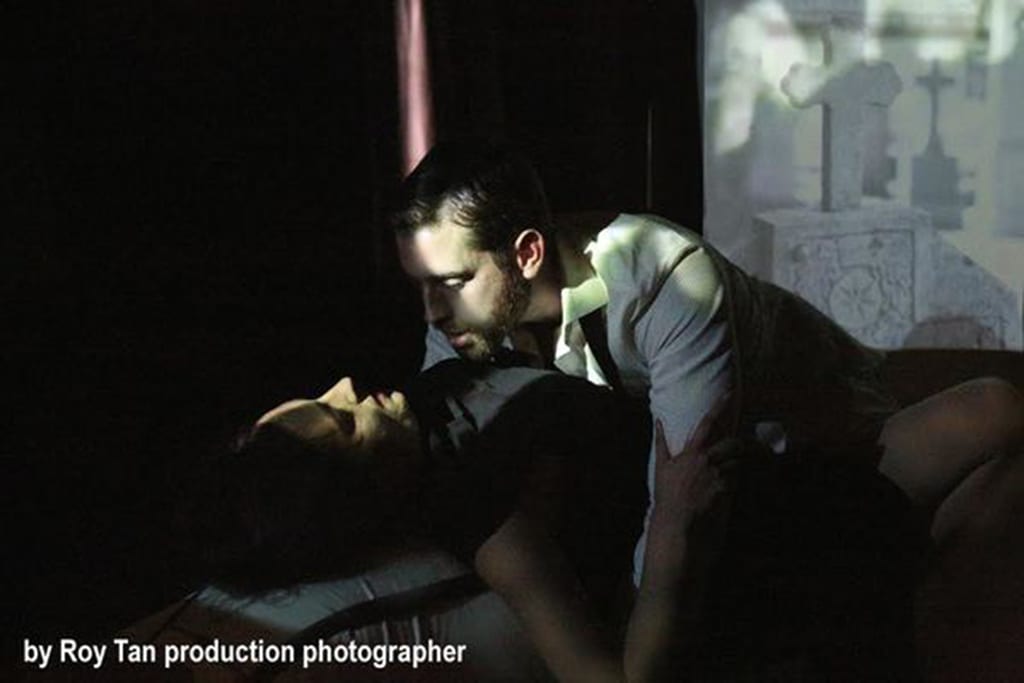Gertrude- the Cry is Howard Barker’s response to Shakespeare’s ‘Hamlet’. Originally performed in Elsinor Castle in 2002, this is a version of events featuring a highly sexualised Gertrude. She’s far removed from the older, genteel and fragile woman who is usually seen on stage. Barker’s work has been (self) termed as ‘theatre of catastrophe’ and he famously addresses themes of violence, sexuality and megalomania. This is no exception. It’s a raw and brutal play. There are frequent scenes of graphic simulated sexual acts.
Chris Hislop’s revival presents the play on a catwalk style stage with the audience seated either side like fashionistas awaiting the arrival of the models. The theme continues with loud music and projections of kaleidoscopic images that make fingers and faces look like bizarre pulsating orifices. The opening of the play is raucous and disturbing with overt eroticism that manages to be both perturbing and alluring at the same time. Gertrude and her brother-in-law Claudius launch onto the narrow stage and start to ravish each other, plotting in a lust crazed folie a deux to kill Gertrude’s husband (and Claudius’ brother). They proceed to poison him and Claudius takes Gertrude roughly from behind as she leans over the dying man, her cry of orgasm mingling with her husband’s dying screams of pain. This is a world away from the insipid and bloodless couple of a standard production. In the last major revival of ‘Hamlet’ by Lyndsay Turner at The Barbican they looked too disinterested to even play a hand of Whist together.
Izabella Urbanowicz’s Gertrude is a magnificent sight to behold. She struts about the stage in miniscule outfits, grey skinned with wild post-coital hair. There’s a touch of heroin chic to her complete with black rimmed eyes. Urbanowicz captures her beautifully and skilfully portrays a woman driven wild by lust. The sense of derangement is continually offset against her sensuality. She flits from mournful to lustful, gleeful to bereft and from gloating to tortured. Urbanowicz is a fascinating vision. Equally strong is Liza Keast as her terrifying mother-in-law and Jamie Hutchins as a bovver boy style Hamlet.
Barker’s play sets the women in charge (Claudius is so effete that even the servants dominate him) and it should be powerful and shocking. The occasional comedic line is well placed and the poetic rhythms are mostly a joy to listen to. The problem lies with the structure of the play. In spite of the strong beginning the play often flounders with a weak middle and an unfocused ending. At two hours with no interval it’s an ordeal at times and the script has some stuffy and verbose interludes.
Fringe theatre can go one of two ways. The audience can be transported somewhere else or left feeling like they’re on a hard dining chair in a stuffy room above a pub. This revival flits between the two and often lacks atmosphere. It’s a shame as the brief flashes of audio and visuals work well, apart from the occasional obvious moment.



